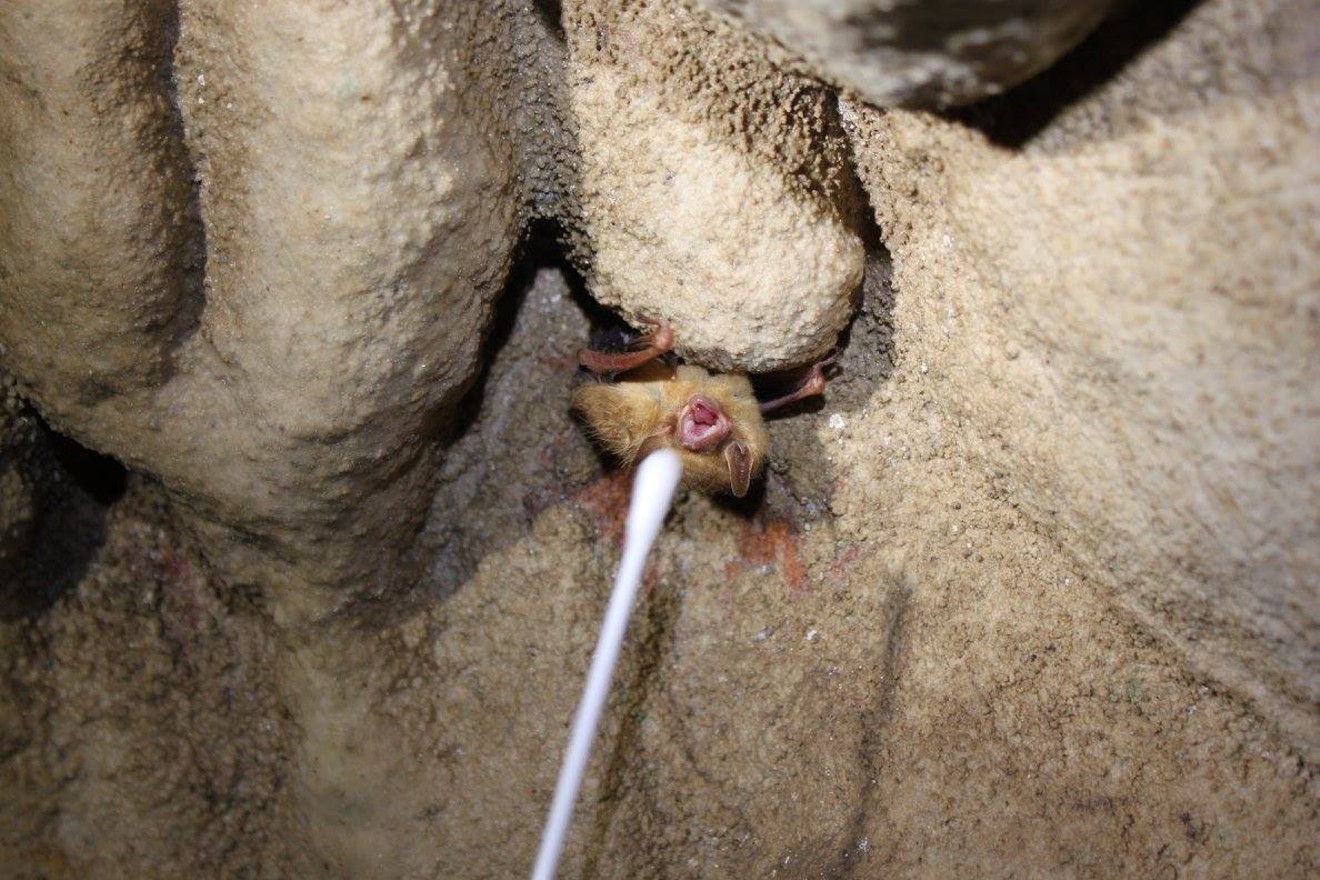Biologists from Bat Conservation International and Texas A&M University’s Department of Wildlife and Fisheries Sciences and Institute of Renewable Natural Resources spent parts of January and February in caves across 13 counties in parts of North Texas and the Panhandle, looking for DNA evidence of Pseudogymnoascus destructans, the fungus that causes white nose syndrome. They found it among three species — the tri-colored bat, the cave myotis and Townsend’s big-eared bat — at six locations, but so far no sign of the disease itself.
“We just found low levels of DNA,” says Melissa Meierhofer, a research associate and doctoral student with the A&M institute. “So the bats look healthy, but we just found the fungus.”
Still, the fungus’ arrival in Texas is a worrying sign, Meierhofer says, since Texas is a crossroads for a variety of bat species. Its arrival here puts the fungus within 200 miles of New Mexico, offering a potential inroad for the disease to spread to states to the west that so far have been spared.
Since its discovery in a single bat cave in New York 2006, the fungus has spread to 33 states, moving around 200 miles every couple of years. White nose syndrome, so called because the disease often causes tufts of white fungus to appear on infected bats’ muzzles, has been found in 30 of those states. An estimated 6 to 7 million bats have died of the syndrome, Meierhofer says. Populations of some species, such as the northern long-eared bat and the small brown bat, have declined by more than 95 percent in eastern states.
The fungus that causes white nose syndrome is native in Europe and China, and researchers believe a human traveler likely introduced it to a single cave in New York, sparking an epidemic that threatens some hibernating bat species with extinction.
One bright note for Texas’ bat population — and for farmers who benefit from bats’ voracious appetites for crop-damaging insects — is that the fungus appears to thrive in cold, humid caves among bat species that hibernate over winter. Meierhofer says the fungus attacks bats as their immune systems slow down during hibernation, killing wing tissue and consuming fat stores the animals need to survive. With Texas’ short, mild winters, the fungus may be less damaging here.
Also, the Mexican free-tailed bat, the official flying mammal of Texas, doesn’t hibernate. Huge colonies of free-tailed bats in the Edwards Plateau in South Texas, including a colony of 1.5 million bats under the Congress Avenue bridge in Austin, are popular with sightseers and eco-tourists.
“That's the key difference,” Meierhofer says. “The fungal spores can move regardless of hibernation. I think what we’re going to see is the fungus is going to spread, but we may not see the disease developing. All the free-tails could have spores on them [but] they don’t get sick because they don’t have to hibernate. You might not see any bat mortality. That’s the consensus right now. The free-tails haven’t been documented with any fungus on them yet, so we don’t know what will happen.”
They could, however, carry the fungal spores to other species, helping spread the disease farther west.

Technician Ellen Whittle swabs a tri-colored bat.
Melissa Meierhofer, Texas A&M Institute of Renewable Natural Resources
Those tools could include restricting human access to caves where bats hibernate, Meierhofer says, though many are on private land, and that will require cooperation from landowners. Biologists also encourage cavers to follow strict decontamination protocols when entering and exiting caves, using a combination of thorough cleaning, disinfectants and high-temperature water on equipment and clothing to kill any spores they might carry with them.
Meierhofer and her partner followed those protocols as they explored the caves where they found the fungus, going underground to swab torpid bats looking for DNA evidence. Some of the caves were shallow two-room affairs while others branched wildly and flowed with waters. The caves contained from a handful to around a thousand bats, and they took the handling well, she says, generally returning to hibernation after getting their faces rubbed with a sterile Q-tip. She'll likely be back swabbing more bats next year as researchers continue to monitor for more signs of the fungus and potentially the disease itself. To help with that effort, TPWD is asking landowners who know of wintering sites for bats to contact the agency at 512-389-4505.













